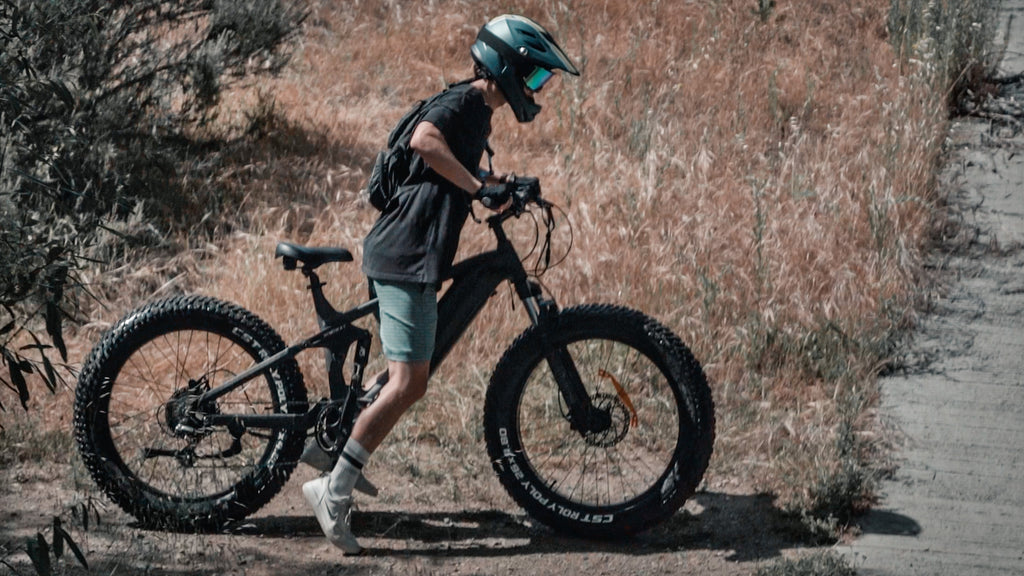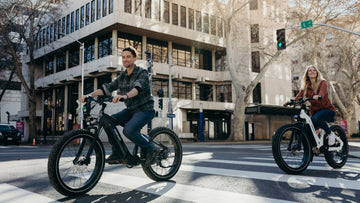All terrain electric bikes have revolutionized the way we commute, exercise, and enjoy the outdoors. With the rising demand for eco-friendly transportation options, electric bikes have become increasingly popular among people of all ages and lifestyles. However, like any other electric vehicle, an electric bicycle requires proper maintenance to ensure optimal performance and longevity.

One of the most crucial components of an electric bike is its battery. With a fully functional and well-maintained electric bike battery, the bike's performance and range will be greatly impacted.
Therefore, it's essential to take care of your electric bike battery to keep it running smoothly and efficiently.
This article provides you with five essential maintenance tips to help you extend the life of your electric bike battery. By following these tips, you'll be able to maximize the performance of your electric bike, reduce the risk of breakdowns, and save money in the long run.
Types of Electric Bike Batteries
Before we dive into the maintenance tips, it's important to know the types of electric bike batteries available in the market. The most common types are:
- 1. Lead Acid: Lead-Acid are heavy and outdated, and they're only used in cheap or low-end electric bikes. They are relatively cheap but heavy and have a shorter life than other types of batteries. They also require regular maintenance to prevent damage and maintain performance.
- 2. Lithium Ion: It is the most popular type of electric bike battery due to its high energy density, lightweight design, and longer lifespan than lead-acid batteries. They also require less maintenance and are best for long-range electric bikes. However, they are more expensive than lead-acid batteries.
- 3. Nickel Metal Hydride (NiMH): They have a higher energy density than lead-acid batteries but lower than lithium-ion batteries. They are also heavier and have less usable charge cycles than lithium-ion batteries. However, they are less expensive than lithium-ion batteries.
- 4. Lithium Polymer (LiPo): LiPo batteries have a higher energy density than lithium-ion batteries and can provide a longer range per charge. They also have a greater lifespan compared to lead-acid batteries. However, they are more expensive and require careful handling due to their sensitivity to high temperatures and overcharging.
Tip 1: Charge Your Battery Regularly
The first maintenance tip is to charge your battery regularly. It is recommended to charge your battery after every ride, regardless of how much battery life is left. This helps to maintain the battery's overall health and performance. If you are not planning on using your electric bike for an extended period, make sure to charge the battery to at least 50% before storing it.
According to a study by Battery University, lithium-ion batteries have a finite lifespan, typically lasting 2-3 years or 300-500 charge cycles, whichever comes first. Regularly charging your battery to 100% or leaving it at low charge levels can reduce its lifespan.
Tip 2: Store Your Battery Properly

When storing your electric bike, it is important to store the battery separately in a cool, dry place. Do not expose the battery to extreme temperatures, as this can damage the battery and shorten its lifespan. Additionally, avoid storing the battery in direct sunlight or near sources of heat or moisture.
A study found that the optimal storage temperature for lithium-ion batteries is between 15°C and 35°C. At temperatures above 35°C, the battery's capacity and lifespan can be significantly reduced.
Tip 3: Keep Your Battery Clean
Keeping your electric bike battery clean is essential for maintaining its performance and ensuring its longevity. Dirt, grime, and other contaminants can accumulate on the battery's surface and reduce its ability to charge and discharge properly. This can result in a decrease in the battery's overall capacity and lifespan. Also, dirt and debris on the battery's surface can increase its internal resistance, reducing its ability to store and release energy.
To keep your electric bike battery clean, start by removing any dirt or debris from the battery's surface using a soft, dry cloth. Avoid using water or any cleaning products as they can damage the battery's delicate electronics. If you need to clean the battery more thoroughly, use a slightly damp cloth or a specialized battery cleaning solution.
Tip 4: Avoid Overcharging Your Battery
Overcharging your electric bike battery can have a detrimental effect on its performance and lifespan. When a battery is overcharged, it can cause irreversible damage to its cells, resulting in reduced capacity and a shorter overall lifespan. Overcharging lithium-ion batteries can cause the formation of lithium metal on the battery's surface, which can lead to internal shorts and a decrease in capacity. It's important to take steps to avoid overcharging your electric bike battery to ensure that it performs at its best for as long as possible.
One of the best ways to avoid overcharging your electric bike battery is to use a charger that is specifically designed for your battery type. Different types of batteries have different charging requirements, and using a charger that is not designed for your battery type can cause damage. For example, the Himiaway Escape Pro is a long-range electric bike with its own unique charger, and the company advises not to use other chargers.
Another way to avoid overcharging your electric bike battery is to monitor its charging progress. Most electric bike batteries come with a built-in charger that will automatically stop charging once the battery is fully charged. However, it's important to keep an eye on the charging progress and unplug the charger once the battery is fully charged. Some electric bicycles also come with an LCD display where you can monitor the battery level and health, like the Himiway Smart Ebike LCD Display.
Tip 5: Regular Maintenance
Regular electric bike maintenance is important for ensuring that your bike battery is functioning properly. This includes checking the battery's connections and cables for any signs of wear or damage. Additionally, have your battery checked by a professional every 6-12 months to ensure that it is functioning at its best.
Safety Precautions:

Here are some safety precautions to keep in mind when using an electric bike:
- 1. Wear protective gear: Before you start working on your electric bike battery, be sure to wear protective gear such as gloves and safety glasses to protect your hands and eyes.
- 2. Use the right tools: Make sure you are using the right tools for the job to avoid damaging your battery or other components of your electric bike.
- 3. Turn off the power: Before you start working on your battery, turn off the power to your electric motor bike to avoid any potential electrical shocks or hazards.
- 4. Handle the battery with care: Be sure to handle your battery carefully and avoid dropping it or exposing it to extreme temperatures.
- 5. Dispose of your battery properly: When your battery reaches the end of its lifespan, be sure to dispose of it properly. Many batteries contain hazardous chemicals that can be harmful to the environment if not disposed of correctly.
Conclusion:
Electric bikes are a fantastic way to get around, offering a fun and environmentally friendly alternative to traditional modes of transportation. However, like any piece of equipment, they require proper maintenance to ensure they perform at their best.
The battery is one of the most important components of an electric bike, and proper maintenance can help to extend its lifespan and ensure optimal performance.
We have discussed five maintenance tips for your electric bike battery, including charging your battery regularly, storing it properly, keeping it clean, avoiding overcharging, and regular maintenance.





























